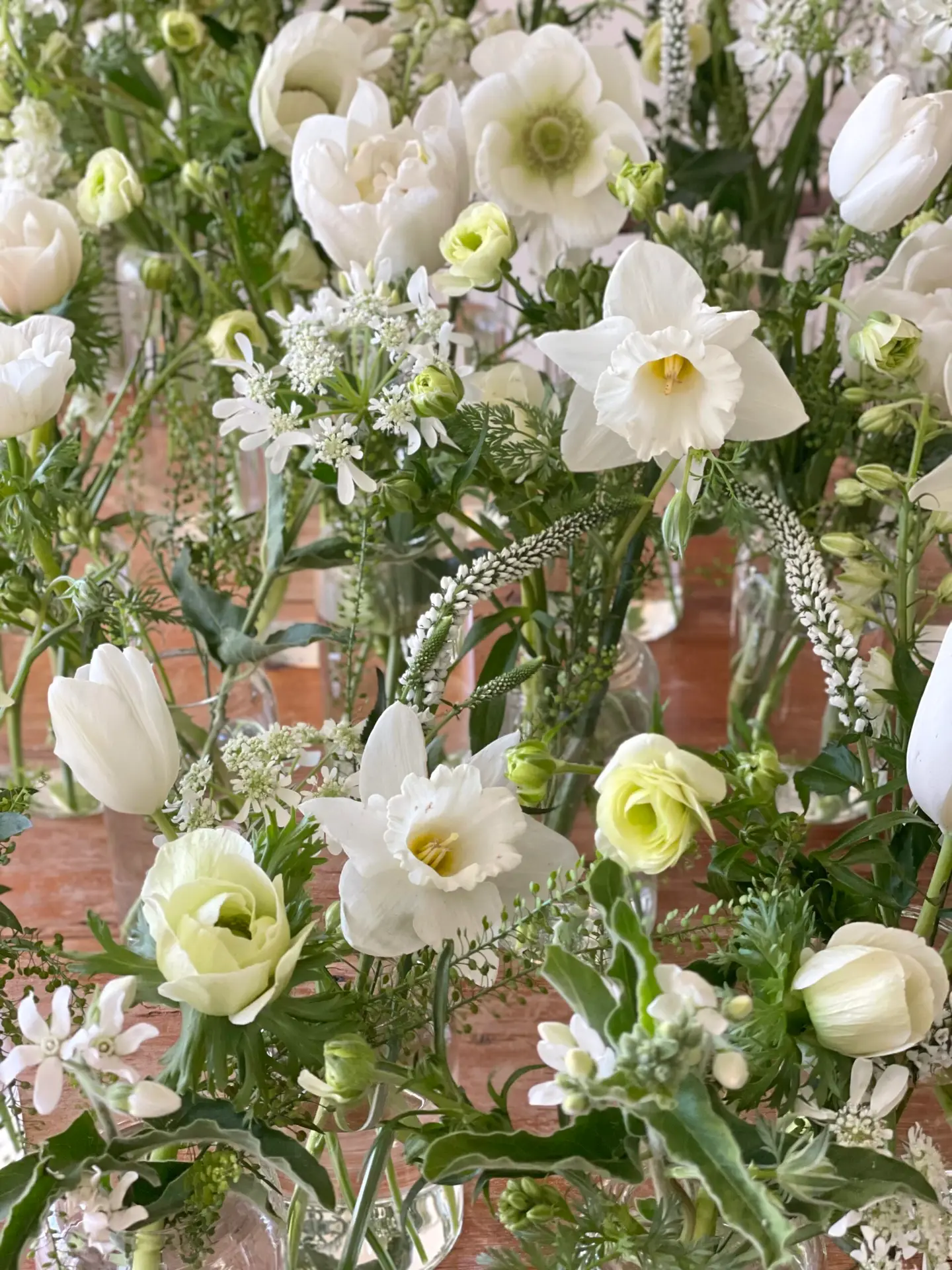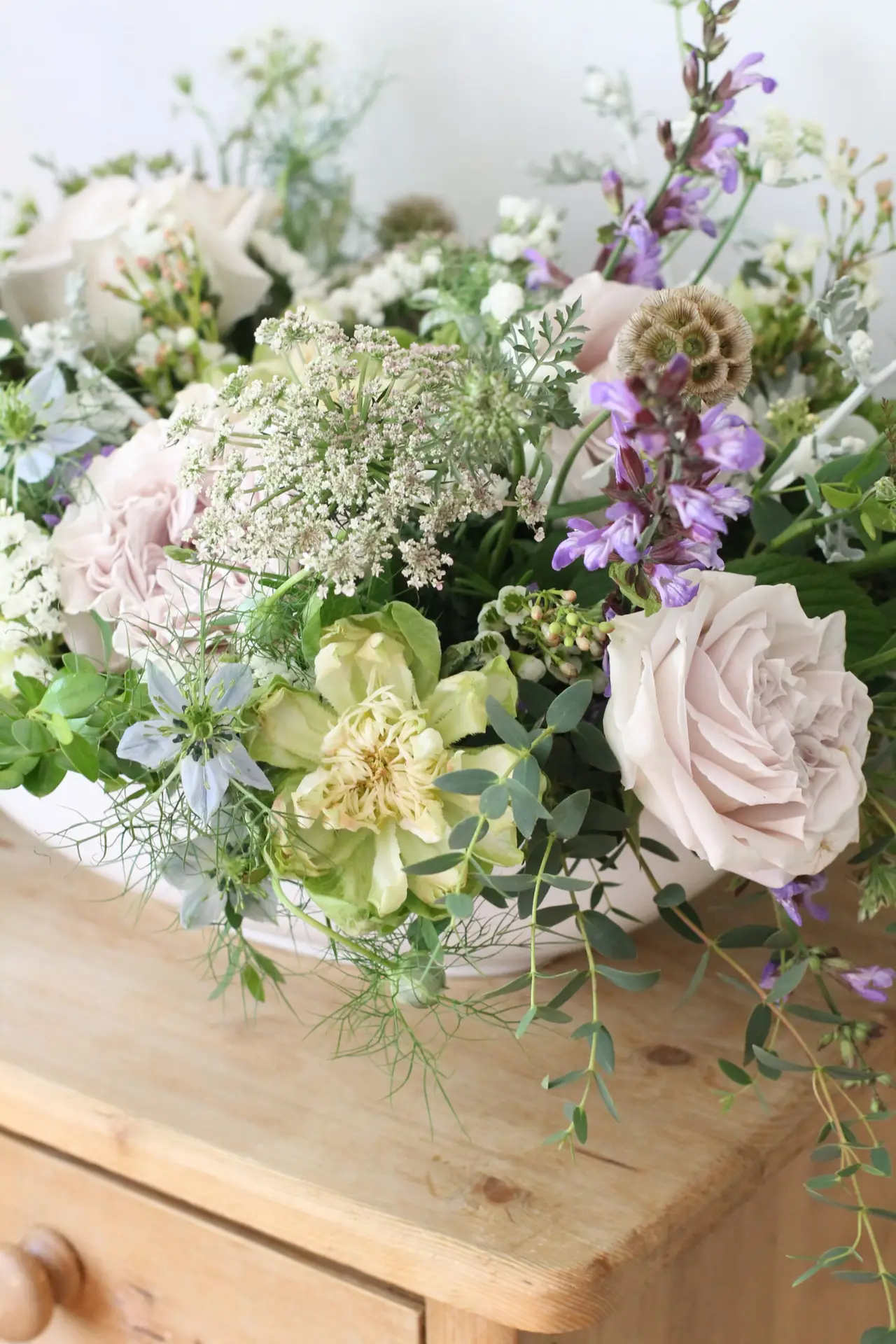For a long time, most couples were celebrating their nuptials at wedding-specific venues; not barns, or vineyards, or converted gold coast mansions (which have all mostly morphed into, well, venues). Those on a budget continued to utilize VFWs, Hiberium Halls, or church’s community space—and with tradition still the most important focus, anything considered “unique” was few and far between.
Going back further, there was hardly a thing as say, a wedding floral design studio. You’d instead stop by your neighborhood flower shop and place an order, most likely from preselected design options. A little further into the future, venues would host wedding showcases that were essentially the only space for vendor promotion, aside from word of mouth.
 I was a teen in the sweet spot between the launch of AOL and the birth of social media, and went on to study advertising and marketing communications in college which granted a front row seat to how internet usage would change how we learn, shop, and communicate. In the wedding world, national websites like The Knot, and more local ones such as LIWeddings.com gained fast popularity for planning while offering vendors a way to advertise and gain recognition through reviews.
I was a teen in the sweet spot between the launch of AOL and the birth of social media, and went on to study advertising and marketing communications in college which granted a front row seat to how internet usage would change how we learn, shop, and communicate. In the wedding world, national websites like The Knot, and more local ones such as LIWeddings.com gained fast popularity for planning while offering vendors a way to advertise and gain recognition through reviews.
I entered the event floral design world in early 2008, coming from (of all places) a financial marketing job. By September of that year, the stock market took a giant tumble and we were officially declared in a recession. This ushered in tremendous changes to industries everywhere, not excluding weddings and events. Nationwide and locally, couples grappled with job insecurity and the hope to buy a house, while also wanting a wedding.
Almost simultaneously, the internet was providing alternative ideas for weddings through mostly blogs, some launched by wedding professionals themselves, others from individuals going through the planning process. What did they have in common? Non-traditional. Make it your own. Do It Yourself. Websites such as the original Style Me Pretty, Once Wed, Ruffled, Offbeat Bride, Green Wedding Shoes. Many sites and blogger also set their sights on social media apps where information spread faster, wider and for a time, cheaper. And then came, Pinterest.
In periods of great change to industry due to technological advances or economics, it’s not uncommon for those who work in less secure or unfulfilling jobs to follow dreams instead into creative outlets—and after 2008, it was at a great benefit to the wedding industry. Stationery. Photography. Floristry. Event Planning. Baking. Catering. Each category became more personalized.
Specifically on Long Island, the East End was also experiencing its own transformation, including farms and vineyards who were weathering economic-induced hardship while continuing to grapple with issues they already faced prior, such as the cost to own and maintain farmland. They began to open their properties to host events. It was, honestly, sort of a renaissance period. Sure, there was a lot of burlap and mason jars in the beginning, but it showed there is balance against formality. Details became of upmost importance, and to this day those are my favorite part of a wedding.
As the economy began to bounce back from the recession, DIY and non-traditional weddings with the purpose to save on costs morphed into a single desire for hosting a more creative event reflective of each couple. For the floral industry in particular, the shift from church ceremonies paved way for on-premise arches and pergolas and aisle markers. Flowers more and more were expected outside of traditional lines to maintain uniqueness, or mimic inspiration.
What was once considered strictly high-end became overwhelmingly mainstream, and it hasn’t changed much to this day. As creatives, we can’t help but embrace this. I take so much pride in making beautiful vignettes, greening ceilings, layering staircase moments, flowering mantles; executing gorgeous backdrops is nothing short of a dream and it’s one shared with all our clients.
 Then the pandemic humbled us. We were once again reminded of how fragile our industry’s ecosystem can be. Many of us got a lesson in supply chain issues and how, where and what to purchase alternatively. Again, many dreamers rose to the occasion finding even more niche markets in the events space. Celebrations felt more important than ever— fully embracing our most special moments and encapsulating them in our memories for years to come—became a shared goal.
Then the pandemic humbled us. We were once again reminded of how fragile our industry’s ecosystem can be. Many of us got a lesson in supply chain issues and how, where and what to purchase alternatively. Again, many dreamers rose to the occasion finding even more niche markets in the events space. Celebrations felt more important than ever— fully embracing our most special moments and encapsulating them in our memories for years to come—became a shared goal.
But the aftermath of this time period has caused another economic stress. Many of us who buy goods to provide services have felt the pains of inflation in business, just as we do in our everyday lives. For florists, the reality is the majority of our flowers are currently grown outside of the US and even when they are grown here, the bulk are from states where agriculture is already becoming vulnerable due to climate change. Local blooms are best, but susceptible to weather fluctuation and demand. Most hard goods and supplies are also not made here. Now we watch with added anxiety of harsh global news and daily tariff fluctuations. Anyone in the import/export/customs industry will tell you how maddening it all is. There are no quick fixes to trade, and having a fast and furious approach harms us all.
I tend to hear some vendors proclaim weddings “are a luxury” to justify increases and weed out any weddings with an inflexible budget; and they’re not entirely wrong. Floral Design is a job. Just like other professionals, we need to get paid appropriately based on the hours we put in and our experience so we can provide for ourselves and our families. But we have also set a new standard for celebrating through the circulated inspiration that bombards our potential clients. What does that mean for the work we want to provide?
We also cannot deny wage stagnation across all job sectors in addition to cost of living. This is a non-partisan issue. Without wage increases for the majority of the population, we cannot expect anyone to prioritize parties—big or small—and for those who do, for there to be enough for all vendors to make a living from.
All this to say—things are feeling eerily familiar again. When I started clover & the bees, I decided I would never require a minimum to book an event, and that was influenced by all I’ve experienced in the last almost 20 years in this industry. The challenge to make something beautiful regardless of budget feeds my creativity and I’m learning that my couples are receptive to whatever blooms I choose if they grant me that flexibility. I’ve already see an uptick in smaller gatherings such as restaurant-hosted weddings of no more than 50 guests, and it reminds of when I too was a bride in 2009, having to make hard choices but still desired a beautiful celebration. Out of darkness grew great beauty.
I adore unique locations and personalized details. Calligraphed name cards and hand-crafted favors. Polaroids alongside professional photos. The gorgeous videos wedding content creators curate of all the special background moments. Small bridal parties and intimate guest lists. In future posts, I will talk further about cost, budget and creativity; but for now, let us digest. As always, please feel free to send an email directly with any questions.